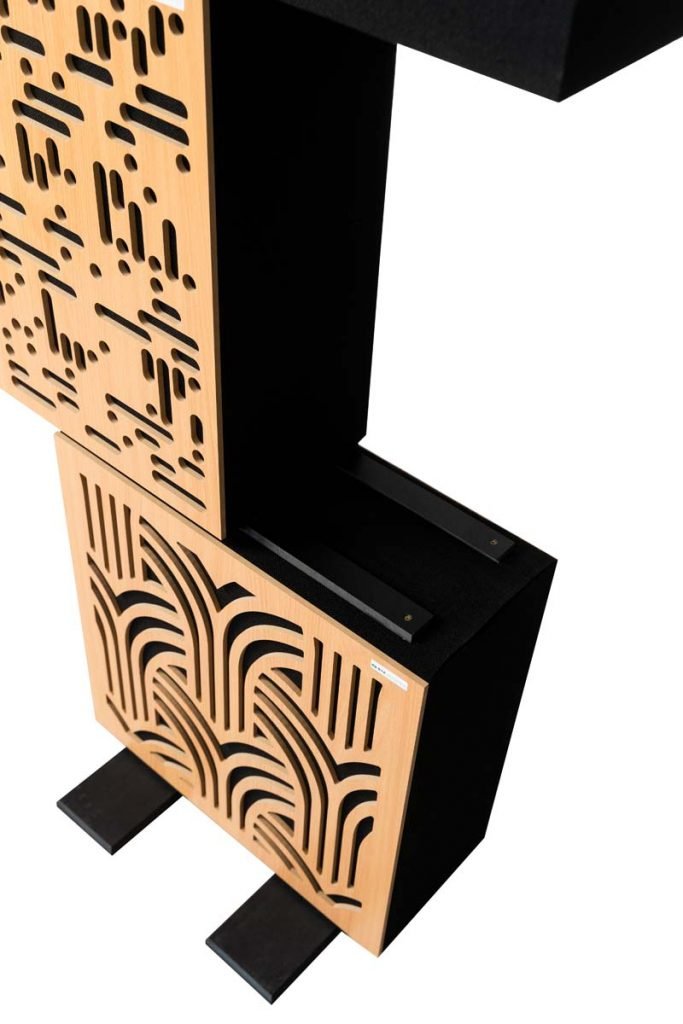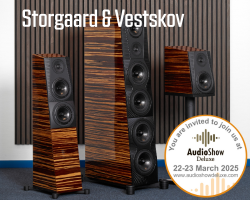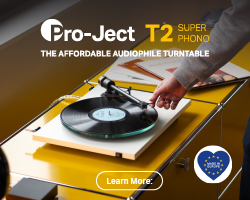GIK SOUNDBLOCKS REVIEW
Stuart Smith tries the new modular SoundBlock system from the room treatment specialists GIK.
We use GIK products in both our listening spaces and we use them because they work as advertised. They are zero bullshit designs that are designed to make less than ideal listening spaces into optimal listening spaces and, at the expense of repeating myself, I think they offer perhaps the biggest bang for your buck when you are putting a serious listening space together.
I look at photographs of uber-high-end systems placed in untreated rooms on social media and metaphorically tear out what little hair I have left. Now I’m aware that not everyone has the ability to have what look like studio panels in their living space, but GIK also produce some very nicely designed and aesthetically pleasing designs for such purposes and you can even get your favourite images printed onto them. I know there is the argument that “the stuff of life” (sofas, book-cases etc) should suffice but in many cases we are talking about folk that have invested tens of thousands of pounds/euros/dollars/beer-tokens into their speakers and electronics and I’m of the mind that a grand or so (perhaps a lot less) on a few strategically placed panels is money very well invested. Anyway, now that I’ve had my little rant I’ll get on with the matter to hand and that is the review of the latest product from GIK, the GIK SoundBlocks.
GIK SOUNDBLOCKS
The GIK SoundBlocks were introduced at the Munich High End show back in May and are designed to offer a degree of flexibility over and above their standard panels.
They are a modular design made up of individual and stackable blocks each measuring 23”x23” and being 10.5” deep. They come in a whole load of colours and also with attractive fretted wooden panels on the front and so you can buy the ones that match your room the most. SounBlocks can be mounted on the wall like you would normal panels or they can be interlocked via the rails on them to produce free-standing arrays to fit your space and make what is essentially a false wall.
The thick panels are active below 50Hz for bass control but the clever bit is that there is flexibility in the way they interact with the mid-range and treble frequencies. This means that you can have full absorption, range limited bass trapping, diffusion plates, and the aesthetically pleasing “impression” plates. So, this means that you can work with the GIK team to put together an array that gives you the best mid/top range control for your specific room and requirements. I like this idea of flexibility a great deal and it allows a mix-and-match approach using relatively small individual blocks. GIK says that “The blocks can be used in high-end audio rooms, both for recording/mixing/mastering and for audiophile listening rooms and high-end theatres. Sound Blocks allow you to line the entire perimeter of the room with effective, flexible treatments giving the power and flexibility of built-in treatments behind false walls, but in a proven, modular system that can be easily shipped and assembled on site. Another application might be in large, open-concept theatres or listening rooms. A Sound Block Array placed near the listeners and speakers can create both visual and acoustic separation for the listening area.”
So, your array may be made up of a bottom panel that stands on the floor and a top panel that attaches to this via the simple but ingenious rail system and this would give you a panel 46” high. However, you can add middle blocks in-between the top and bottom panels to make them units wither 69” high if you use one middle block or 92” if you use two middle pieces. We were sent a top, a bottom and one middle panel to make a 69” array. The three panels arrived well packaged.
The top panel has a bottom rail and a blank top, the middle panel has rails on top and bottom for fitting to other panels, and the bottom panel has a rail on the top for fitting to other panels and a rail on the bottom for slotting on the footers. This latter way of connecting the footers is again a simple but ingenious system. Building a system higher than two panels will require a couple of people to lift and place each panel as individually they are quite heavy and I would suggest that you decide where your array is going to go, take the individual panels there, and put it together “in-situ”.
Prices for the basic SoundBlocks are €150.50 (£127.50) for the bottom panel including feet, €160.50 (£135) for the middle panel with two connector rails attached, and €150.50 (£127.50) for the top panel with a rail on the bottom only. So, a three tiered system Bottom, middle, top) will cost you €461.50 (£390) and a four-tiered system (bottom 2x middle, top) will cost you €622 (£525), though GIK do recommend that three panels is as high as you should go with this system. You can also buy a wall mountable version that is €135 (£115) which obviously has no rails. If you are looking for the more ornate front panels, there is a small extra charge of £25 per panel.
A CHAT WITH GIK’S DAVID SHEVYN ABOUT THE SOUND BLOCK CONCEPT
HP: Where did the idea for Sound Blocks come from?
DS: Like all great ideas this was as a result of teamwork, putting our heads together, and looking for solutions for our customers’ problems in a cost-effective, cool and innovative way. The journey started with Lukas Rimbach, our head of European Customer Service coming to me and saying could we have a deeper bass trap that could go lower. The requirement here was for back wall treatment where the deeper the panel can absorb the more effective, we can control the low end in a room. We took this request and tied it back to an idea we had previously to have a stackable bass trap. The rail system enabled us to go that one step further and have a safe stackable bass trap but one that also has a great touch of interior design.
HP: What are their intended uses and where do you see them being used in a domestic listening space? Where are they most effectively used?
DS: What is so special about the Sound Block is its versatility. It can come either as a wall-mounted panel or as part of our building block modular scheme. The idea is to give the back wall a low-end bass absorption boost but they can also be used as Gobo’s in the live recording studio environment. What is ideal here as well, is that many of our customer rent and cannot wall mount their acoustic treatment and with Sound Blocks you do not need to, they are completely freestanding.
HP: What frequency ranges will the GIK Sound Blocks tame and what do you think the overall effect on the listening experience will be for domestic users?
DS: The SoundBlocks are going to help with the very low end which every room always suffers with. They are 98% effective at 60hz and will also absorb higher than any commercially available wall-mounted bass trap at 50hz and below. They also come with our full range of limiters so you can use them either as full broadband absorbers, meaning they absorb from 40- 20,000 Hz or with our range of plates which will reflect over 1,000hz. These are useful when you are happy with your mids and highs but still have a gnarly low-end issue you want to deal with.
HP: I found the new footers exceptionally easy to use and more sturdy than the previous incarnations; do you intend to have them available on other GIK panels to allow for free-standing?
DS: Thanks for the feedback, it is this type of feedback that is what GIK Acoustics is built upon, listening to our customers, what they have to say, their needs, and then for us to look for solutions that not only work but look great too.
HP: How have the Sound Blocks been received in the professional studio environment?
DS: We have been overwhelmed with the number of orders we have received so far. I think this speaks volumes that we have provided an answer to a problem that needed solving for some time.
HP: In the last few years there seems to have been an increased awareness of the benefits of effective room treatment in domestic environments and more serious music lovers seem to be bringing them into their home listening spaces, why do you think there has been this move and how do you further see professional grade products like GIK’s moving further into the home market?
DS: A lot of this has been education. When we set up GIK Acoustic, nearly 20 years ago we made it our mission to not only provide our own acoustic solutions but to educate people on our acoustics and this has taken the form of lectures, videos, online articles etc. However, magazines like yourself also promoting the use of acoustics has helped people appreciate it even more. This October at the Audio Show we are going to take this education one step further and demonstrate an empty and treated room, and let people hear the difference but we will also be testing the room so we can have a seminar on the results and what it means.
GIK SOUND BLOCKS IN USE
Putting the blocks together is simple but as mentioned you may well need a couple of people, though three tiers is doable on your own. They are also easy to take apart and reposition should you wish. I do like this modular approach! A lot! I actually found that a double tier (two blocks) was sufficiently high in our room which left us with the benefit of having another block to position elsewhere in the room, though this naturally had a rail on top and bottom – though this is easily removable with a screwdriver.
The addition of castors would make positioning really easy and I think easy to add yourself.

The feet are sturdy and easy to fit and likewise the SoundBlocks slot into position via rail system.
DO THEY WORK
My thoughts on GIK room treatments are well documented here on HiFi Pig and so whether or not these SoundBlocks work as advertised really wasn’t in question when they were sent out. However, the proof, as they say, is always in the pudding and I did give them a bit of a workout in a few positions around the rooms we have – please keep in mind that our rooms are pretty much well sorted with regards to treatment and that in untreated rooms their effects will certainly be more dramatic than I found.
As per above, our rooms are already treated with regard to panels, but the addition of these in the main room in a 2+1 configuration (with the 1 being the middle section) allows a good degree of fine-tuning and easy positioning.
Putting them behind the main listening position in our smaller room is where I found that they had the most benefit. Our listening spot is around two-thirds down the room from the front wall and it is impossible to put bass traps in the back corners due to the stairs. Having these a couple of feet behind the main seats does have the effect of tightening up the bass a little and this has the added benefit of allowing the other frequencies to appear less “muddy” (though given this room is well sorted the effect was not as large as it would be in a room that had no treatment.) This room is also used for home cinema and currently the projector sits on a table behind the main listening/watching spots and so when watching films I needed to move them out the way – castors would be perfect in this situation. Having the spare block to move about was also pretty useful as it could be pretty much hidden away and is free-standing.
In the big downstairs room it’s not really feasible to put these behind the main listening position at the moment but I did try them down the side wall where we already have some thinner panels, though these aren’t ideally positioned. Again this proved to be beneficial sonically, though, again, this is already a well-treated room and the effect would be more noticeable in untreated rooms where the effect would likely be pretty significant if my past experience of adding GIK panels is anything to go by. Being wide-band absorbers (up to 20,000Hz) I found putting them at first reflection points for speakers quite useful and with the benefit for us that have different speakers in and out quite regularly, their portability was very useful indeed.
QUIBBLES
The size of the footers leaves the panels proud of the wall by around 25cnm and leaves a footer sticking out by another 25cm – the latter could, at a push, be hidden under a rug.
In a domestic situation three units is likely to be too high and so I’d have preferred two sets of two height. However, this is the benefit of a modular system like this – you can mix and match to get to the configuration that best suits your living space
AT A GLANCE
Build Quality and Features:
Well built and look great with the ornate front panels
The modular system is easy to use and the footers are very stable, even when the panels are three tiers high
Simple but clever design
Footers are quite long, as they need to be to support the panels securely, and they do stick out both front and back meaning you can’t put the panels flush to the wall
Sound Quality:
These work as advertised but that wasn’t ever not going to be the case
Value For Money:
The flexibility of being able to change the configuration as and when your room layout changes is useful and means that these panels have good longevity
We Loved:
The modular approach
The just work
Love the front panel plates
Easy to put together, though you are better off with two people
Relatively easy to move
GIK will help you measure your room and offer their expert advice free of charge for those looking to buy
We Didn’t Love So Much:
Footers mean they don’t sit flush to walls
Three panels high will be too much for most domestic situations
Price: As tested €461.50 / £390
Elevator Pitch Review: GIK has produced a modular wide-band absorption panel system for both domestic and studio environments. This modular approach means that potential users have a greater degree of flexibility with regards to positioning as well as being able to reuse/modify their layout should the room layout change in the future. Sonically they work as advertised but the flexibility they offer will make them a more attractive proposition for more people.
Stuart Smith



















































































































































































